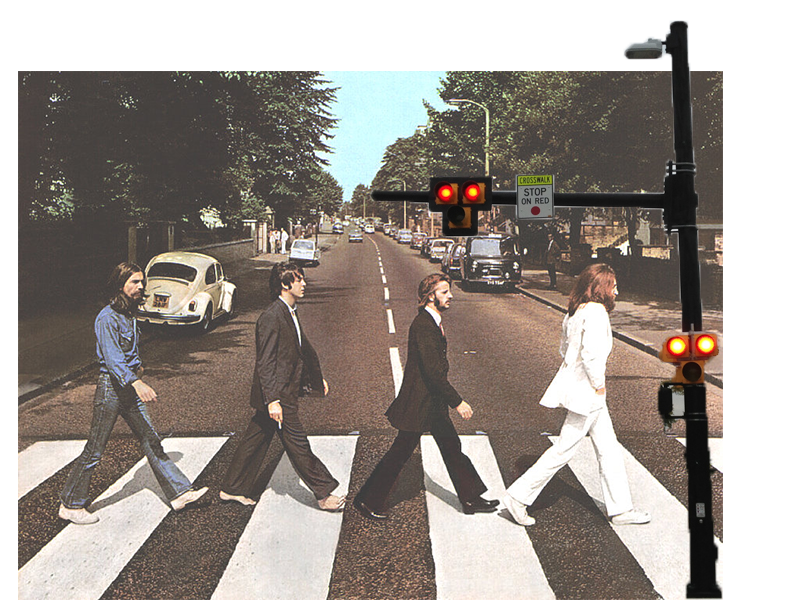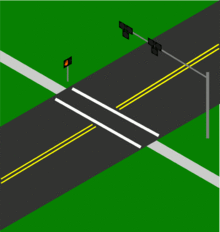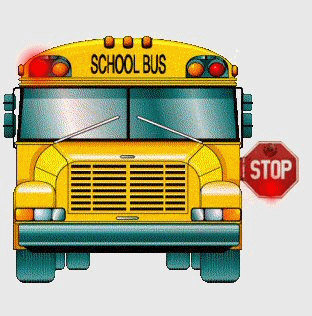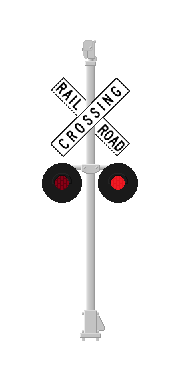A few years ago, my Saturday morning drives to yoga were interrupted by a new traffic signal. This new signal, on the CU campus, was different than any other signal I had encountered. It had only two colors of light: yellow and red. It had lots of flashing: in addition to solid yellow and solid red, it also had flashing yellow and a double flashing red. The only instructions: “STOP ON RED.” And sometimes it was off.
I could not understand how it worked. I racked my brain for the rules on flashing red. Stop, yes, but after a full stop, could I then proceed? Double flashing red? Is that stronger than a single flashing red? And WHY? We have an established system of red, yellow, and green, do we really need a new signal? It seemed an unnecessary complication. Maybe the traffic engineers were getting bored with the old standbys…always keeping us on our toes…
I asked around and people on campus said they received an email explaining how the signal worked. God forbid! “If you need an email to explain how a traffic signal works…” That practically violates the first rule of good user design. And to make matters worse, it was located smack dab in front of the campus police station. It terrified and baffled me.
Luckily, in the early mornings, there was not much call for the signal, and it remained dark and silent as I crept past.
Then in the fall, when the students returned to campus, I saw it in action. It is situated mid-block, where there is no intersection, on a road that runs along the edge of campus. At times, there is quite a large flow of pedestrians across this road. While vehicles on this road do not go fast, a steady stream of both vehicles and pedestrians could cause quite a bit of congestion as people and cars awkwardly competed for slim openings.
When I saw the signal in action, however, it suddenly made sense. Despite it’s complexity, I was surprised that the HAWK signal succeeds in solving a common crossing design problem. Here’s why.
The Problem
Pedestrians have the right-of-way when crossing a road. This is good. However, when there is a consistent stream of pedestrians crossing the road, the cars never get a turn to go. This can lead to confusion, frustration, and dangerous games of chicken. Usually when there is a conflict like this between pedestrians and vehicles, a signal is added to alternate the right of way: the pedestrians wait while the cars go, the cars wait while the pedestrians go. Ho hum.
But a signal is frustratingly inefficient. If there are no cars, pedestrians are loathe to wait, and vice versa. A signal is either red or green and doesn’t give much leeway for common sense. Both vehicles and pedestrians can be left waiting for the signal to finish more often than they are waiting for actual cars or actual pedestrians. This frustration leads to noncompliance (which can lead to tragedy).
The Solution
The goal, it seems, would be to only have a signal when needed, and to concentrate the pedestrians (the limiting factor since they have the right-of-way) into bite-sized chunks so both cars and pedestrians can easily flow at the most efficient speed.
And that is what this signal does. It is called a HAWK signal (High-Intensity Activated crossWalK beacon) or, officially, a Pedestrian Hybrid Beacon (PHB). Somewhere between a crosswalk and signal, it works as a kind of buffer or a filter. It concentrates pedestrians into clumps then lets them cross quickly and efficiently.
If a pedestrian does not request to cross, it is off. For vehicles, it is as if there is no signal. A pedestrian requests to cross, drivers first see flashing yellow, then solid yellow, then double solid red. There is no green. Just “attention,” “prepare to stop” and “stop.” As soon as drivers are stopped at a solid red, pedestrians get the “walk” signal.
At the end of the “walk,” when pedestrians get the flashing hand signifying that they should only finish crossing, not start anew, the drivers also get a flashing red light signaling that they can proceed when clear. This is what I would call the “common sense” phase of the beacon and it is actually very refreshing. Once everyone is safe and stopped, pedestrians go, then all can proceed as it is clear.
Cars stop, pedestrians go; pedestrians pause, vehicles proceed; and then the cycle starts all over again, as needed. No one is waiting unnecessarily for the signal to finish. It’s all very responsive, smooth, and logical in action.
History
According to Wikipedia, the HAWK beacon has been around for just over a decade. Developed in Tucson, Arizona by Transportation Administrator R. B. Nassi, P.E., Ph.D., the first HAWK beacon was installed in 2000. From 2000 to 2009 the device was categorized as an experimental device that required approval from the Federal Highway Administration, along with a commitment to collect and submit data on its effectiveness. In 2009 it was approved and included in the US Manual on Uniform Traffic Control Devices as a “Pedestrian Hybrid Beacon” or PHB.
Effectiveness
Research has shown that after a HAWK signal is installed, vehicle/pedestrian crashes can be reduced by 69%. In addition, up to 97% of motorists comply with the HAWK beacon, a rate higher than at signalized crossings or crossings with flashing yellow beacons.
But do we really need this new device? Let’s compare the HAWK beacon to its alternatives: the standard traffic signal and a crossing with a flashing yellow beacon.
Standard Traffic Signal
The standard red/amber/green traffic signal has a familiar, nearly universal, message and sequence:
- Green light: “go.” Traffic can proceed in the direction denoted (with a small footnote that is often forgotten: “if it is safe to do so”).
- Yellow light: “prepare to stop.” The yellow is a warning that the signal will be changing from green to red.
- Flashing yellow: “be aware.” Flashing yellow signals potential danger.
- Red light: “stop.” Do not proceed.
- Flashing red: treated the same as a stop sign.
Ah, a nice refresher of the flashing red: it means you can proceed after a full stop.
What works
- it is clear and generally well understood
- it serves to alternate the rights of way, increasing capacity at intersections
- it gives a warning
- it reduces the rate of right-angle collisions (or vehicle/pedestrian collisions if at a crossing)
What doesn’t work
- it slows traffic
- it increases the rate of rear-end collisions
- it leads to frustration and non-compliance (compliance is increased both through enforcement and when the timing of the light is well-adjusted)
Widely used and accepted, the standard traffic light has some surprising detractors. One traffic engineer sums up his frustrations with the tried-and-true but inefficient traffic light this way: “We only want traffic lights where they are useful and I haven’t found anywhere where they are useful yet.” [Hans Monderman as quoted in David Millward (4 November 2006). “Is this the end of the road for traffic lights?”. The Daily Telegraph.]
In sum, the standard traffic signal has three settings: “frustration,” “anticipation,” and “action!”
Flashing Yellow Beacons
Where there is a large flow of pedestrians across a road, one increasingly common, and relatively inexpensive, solution is to install flashing yellow LED beacons. When a pedestrian wants to cross, they activate the flashing yellow beacons and cross.
There is no requirement for vehicles to stop, but they must yield to pedestrians. It is nothing more than an extra alert that a pedestrian MAY be present.
The flashing yellow beacon seems like a simple solution, however, these crossings have not been well received and are not as intuitive in practice as they seem to be on paper.
What works
- inexpensive
- warns the driver to be alert
- on multi-lane roads, signals driver to yield when a pedestrian may be shielded from view by another vehicle
- increases rate of yielding to pedestrians
What doesn’t work
- no transition, immediate decision required
- flashing yellow does not mean stop
- increases rear-end collisions
- needs large yield distance for added safety, increasing confusion
- provides false security to pedestrian and discourages them from relying on their own senses
- lots of false alarms for drivers: pedestrian may or may not be present
- instills fear and frustration in both drivers and pedestrians
One pedestrian advocate summed up the problems with the flashing yellow beacon as follows:
A yellow light simply doesn’t make sense for drivers. The flashing yellow lights come with a sign that says “stop when flashing” or “stop for pedestrians in crosswalk” or some strange combination of the two. Traditionally yellow means slow down, be cautious, or be prepared to stop; it never commands you to stop.
Drivers are forced to make a quick decision based on the law and their natural intuition to treat yellow as a cautionary color, which usually results in a panicked and distressed driver. This isn’t a good situation for a pedestrian.
The flashing crosswalk signals are equivalent to a traffic light that has neither a green nor yellow light and just suddenly illuminates red. Those signals would clearly be unacceptable, so why do we accept these [flashing yellow beacon] signals?
In sum, the flashing yellow beacon has two settings: “off” and “terror.”
HAWK Beacon
So while research has shown that the HAWK beacon decreases collisions and increases compliance, is the novelty justified?
Why it works
- gives a warning
- responsive, does not give a false alarm
- has a “common sense” phase where driver and pedestrian can proceed if clear
Why it doesn’t work
The biggest problem with the HAWK signal is that it requires user education.
The two problems reported in the literature include confusion when the signal is in its inactive (off) phase and confusion about what to do with the flashing red phase.
And that is my biggest problem with the signal: why double flashing red? And what does “STOP ON RED” mean, exactly?
In my experience, I have encountered double flashing red in two other contexts, both of which mean: “stop unconditionally and do not proceed until the flashing stops.” These two other uses of flashing double red are the “do not pass” lights of a stopped school bus that is dropping off students and the flashing red at a railroad level crossing.
While the HAWK signal has a more than adequate warning phase (solving the main problem of the flashing yellow beacon crossing, which has no warning), the double flashing red signal and “STOP ON RED” instruction is ambiguous. It is not traditionally used in standard traffic situations. A single flashing red is sometimes encountered—at some intersections in lieu of a stop sign, or when there is a power outage—but a double flashing red is confusing. The double flashing red is encountered on school buses (but this varies by state, adding to the confusion), and at the standard level crossing of a railroad. The flashing red at a level crossing means “stop and do not go.” It does not mean “treat as a stop sign.”
This ambiguous use of the double flashing red is, in my opinion, the biggest problem remaining for the HAWK beacon and the mid-block pedestrian crossing.
Conclusion
I was very skeptical when I first encountered the HAWK beacon. More than skeptical, the words “upset” and “angry” would not be too strong. It just seemed too complicated and unnecessary. But then I saw it in action and I saw that, counter to my intuition, it actually works.
The HAWK beacon is an example of real experimentation and evolution in traffic signals, part of the slow but steady innovation and change in traffic engineering, and change in the direction of increased compliance based on common sense, not compliance based on enforcement alone.
The HAWK beacon is good UX. It gives adequate warning and feedback to both pedestrians and vehicles and does not impede their progress to the point of frustration and non-compliance. It emphasizes common sense and gives both vehicles and pedestrians a feeling of safety and agency. (Even when it is in front of the police station—but only after a little education.)
I have come round. I would say the HAWK beacon has two very satisfying settings: “anticipation” and “action.” After observation, use, and some research, I give the HAWK beacon my thumbs up, with one big caveat: that double flashing red part. I would like to see a single flashing red version to test if that would be sufficient. Keep it simple.
(Stay tuned as we are soon to be near a new Diverging Diamond Interchange that is being built in Superior, CO. There are only 34 Diverging Diamonds in the country and they are yet to be approved for the MUTCD standards manual. A Diverging Diamond has a counter-intuitive feature where drivers cross over to drive on the left-hand side of the road. Can’t wait to see it in action in 2015!)




lisa
THANKS for explaining this. Never really understood that damn HAWK signal. So the bigger question is, how does one educate the non-university public who also use that road?